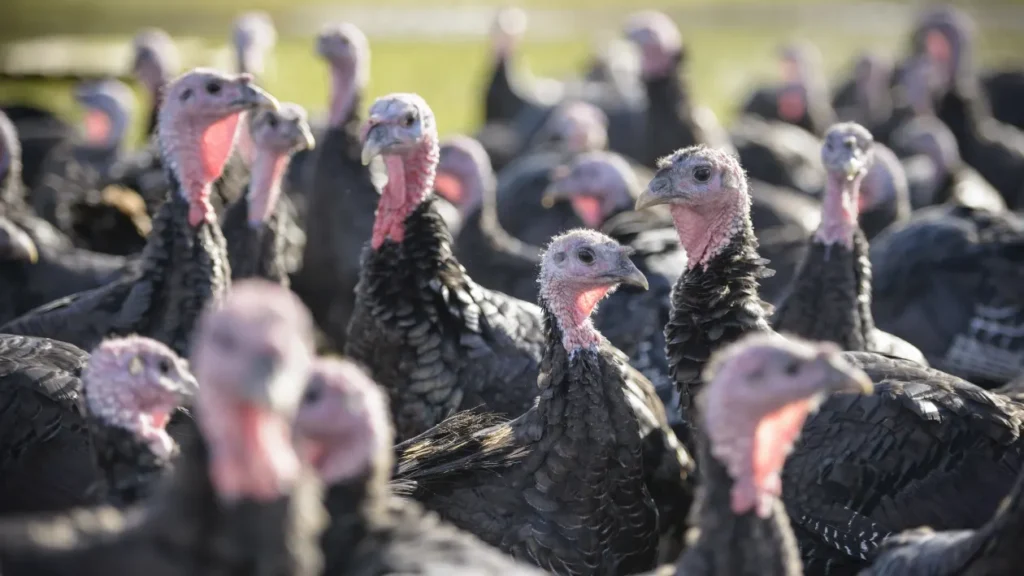Thanksgiving is a time to celebrate life’s abundance, spend time with loved ones, and, of course, eat.

Additionally, after several years of rising prices, it appears that Americans are seeing some respite from their supermarket spending this year when it comes to Thanksgiving fare.
The American Farm Bureau Federation, a trade association for farmers and ranchers, estimates that the average cost of a “traditional” Thanksgiving meal for a group of ten will be $58.08 in 2024, which is 5% less than in 2023 and 9% less than in 2022.
According to the Farm Bureau, the cost of this food basket reached a record high of $64.05 in 2022.
According to the Farm Bureau, households that include frozen green beans, ham, and russet potatoes would pay an average of $77.34 in 2024, which is 8% less than in 2023.
For many households, the yearly price decrease will be excellent news: According to a recent Deloitte survey, 44% of those hosting Thanksgiving this year are worried about the event’s expense.
Economists attribute the dip mostly to a number of supply-and-demand factors that are bringing down the cost of essential staples, most notably turkey, as well as a general drop in food inflation in the United States.
More from Personal Finance:
For a $7,500 EV tax credit, act now.
How the election of Trump may affect your health care
Americans are traveling farther thanks to remote work.
The chairman of the Wells Fargo Agri-Food Institute, Robin Wenzel, stated that food inflation has been rather mild. “There, you are seeing some nice alleviation.”
However, according to the Farm Bureau, the cost of a traditional Thanksgiving feast has increased by 19% since 2019.
An economist with the Farm Bureau named Bernt Nelson stated that “declines do not actually erase the enormous advances we enjoyed.”
Turkey has been a ‘curious item’
According to Nelson, changes in the price of turkey this year “certainly had the most influence” on the total cost of a Thanksgiving lunch. The reason for this is that, according to him, a 16-pound bird accounts for 44% of the total Thanksgiving food bill.
According to the Farm Bureau, the average price of a 16-pound turkey nationwide has decreased by 6% since 2023. The consumer price index indicates that overall turkey costs have dropped by almost 4% over the previous 12 months.
According to Nelson, Turkey has been a “strange item this year.”

The availability of turkey is “substantially” reduced, he claimed. According to the U.S. Department of Agriculture, farmers in 2024 raised over 205 million turkeys, a 6% decrease from 2023. According to Nelson, that is the lowest number since 1985.
He attributed this in large part to the effects of avian flu, a deadly and infectious disease that has killed over 14 million turkeys since 2022.
If all else is equal, lower supply would often result in higher costs. However, consumer demand has also declined. According to him, the amount of turkey consumed per person has decreased by roughly one pound this year.
Lower turkey prices have been the overall effect.
Weather and labor impacts
According to Nelson, whole milk, a necessary component of pies and other dishes, saw a notable 14% decrease in price.
According to Nelson, this is mostly due to “favorable” climatic conditions in the United States for dairy cattle, which benefit both the crops they eat and their general well-being. This helps increase milk output.
Naturally, not everything is less expensive.
For instance, the Farm Bureau reported that prices for processed goods such cubed stuffing and dinner rolls rose more than 8% from 2023. The group’s report stated that the main cause of this is inflation that is not related to food, like labor costs, which raise prices “for partners across the food supply chain.”
During the pandemic, there were other factors that contributed to the sharp increase in supermarket prices, aside from labor expenditures.
For instance, a bird flu outbreak that impacted the price of eggs and poultry contributed to the fact that food prices increased more quickly in 2022 than they had in any other year since 1979. Meanwhile, the USDA notes that Russia’s invasion of Ukraine “compounded other economy-wide inflationary pressures such as high energy costs.”
According to experts, rising energy costs, such as those for gasoline and diesel fuel, result in increasing prices throughout the food supply chain, including for delivering foods to shop shelves.
“As wholesale food prices and several other inflationary variables eased from 2022, food price rise slowed in 2023,” the USDA stated, and it has continued to drop in 2024.
How to trim Thanksgiving costs
According to Wenzel of the Wells Fargo Agri-Food Institute, consumers who want to cut costs on their Thanksgiving meal in 2024 can do so by switching between store brands and name brands for specific food goods.
A Wells Fargo investigation found that if ten friends and family were fed a menu of only store-brand foods, they would save $17 overall.
This year, it is not always the case that consumers pay more for name-brand products.
For instance, according to Wenzel, name-brand cranberries are typically less expensive than store-brand ones.
“It really boils down to doing a little homework while shopping this year,” Wenzel stated.